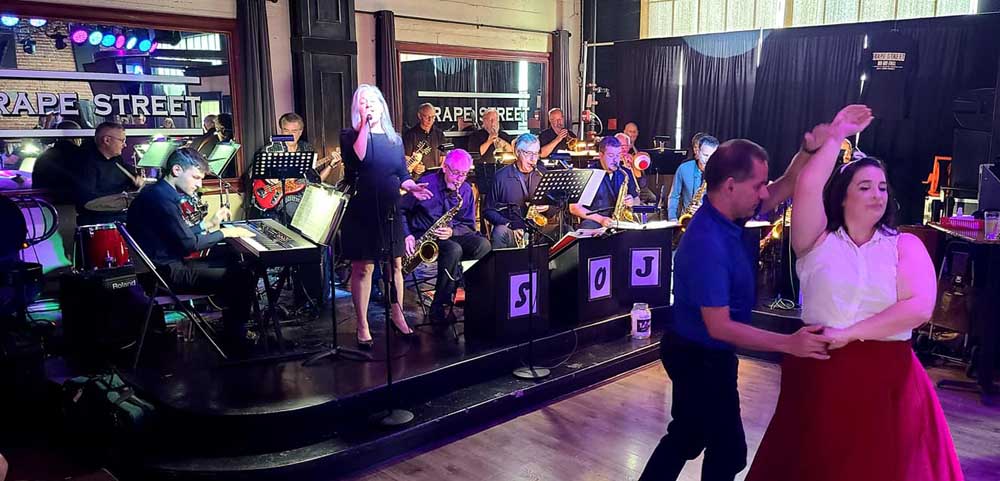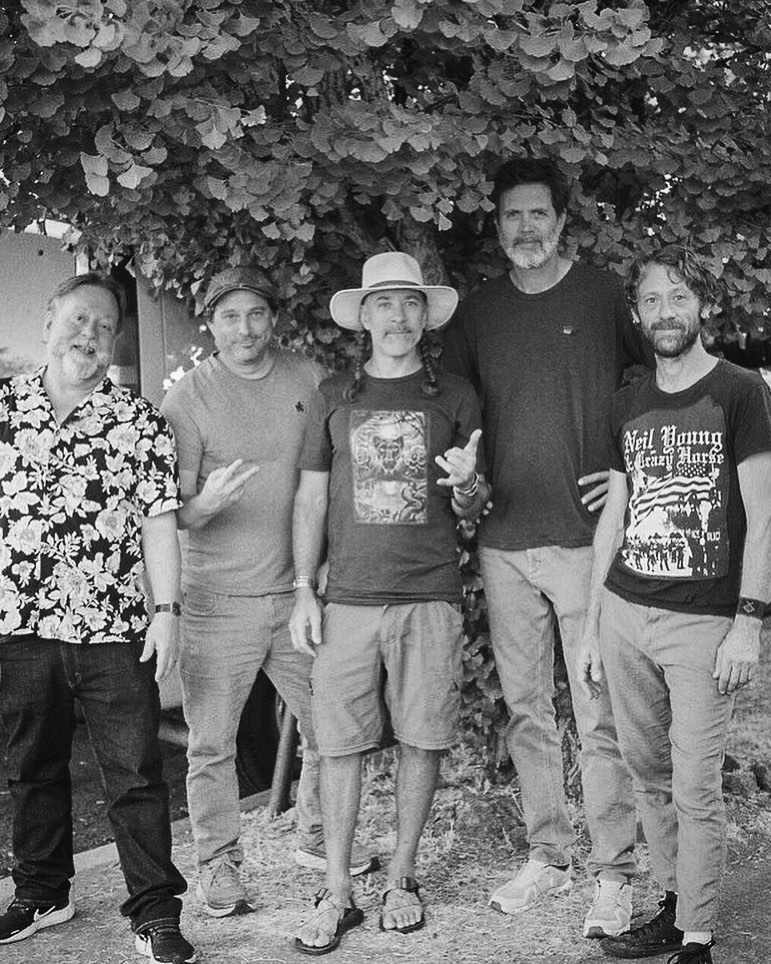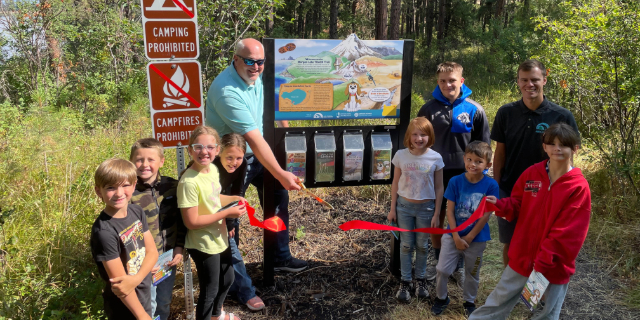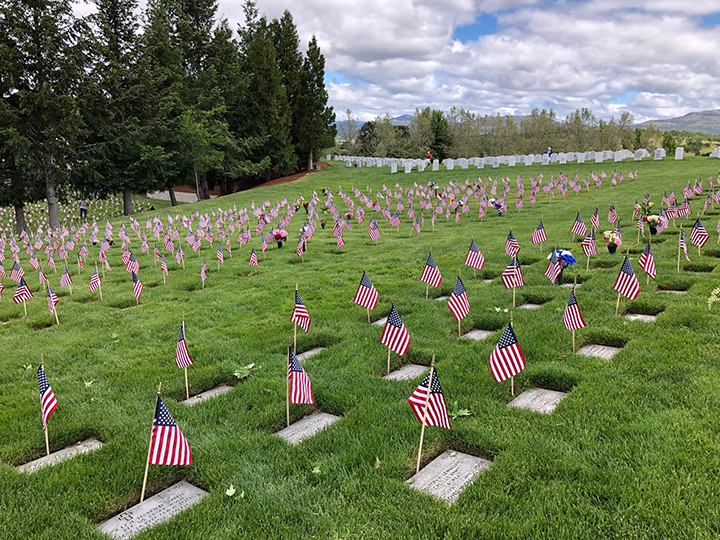Southern Oregon Jazz Orchestra — 15 years of cool
Published 12:00 am Wednesday, May 10, 2023

- Dianne Strong-Summerhays provides vocal flair for the Southern Oregon Jazz Orchestra's big band jazz — perfect for dancing along to — at Grape Street Bar & Grill.
Big band jazz has nearly outlived all its original fans. Through the intervening decades, the music has sometimes dimmed, but never died.
“There was a little slump in the ’60s and ’70s,” said Corren Hileman, trumpet player and band leader for the Jackson County Jazz Orchestra.
“Yeah, cause everything was so groovy,” said Diane Strong, the orchestra’s vocalist.
Duke Ellington — one of Hileman’s inspirations — continued to release big band jazz into the 1970s, he said, by updating the sound and staying hip. His orchestra does the same with its “book” — a repertoire of over 200 songs the band plays on a regular basis.
“We do standards from the ’40s, ’50s, ’60s, with modern arrangers doing the music so the chord changes and some things are changed. It modernizes it a little bit. It’s like how Michael Bublé does it. It’s still big band, but updated,” Hileman said.
The jazz orchestra celebrated its 15-year anniversary April 26, with a show at its longtime favorite venue — Grape Street Bar and Grill in Medford.
The show was a celebration for fans and a reunion for 25 past and present members of the orchestra. Through the years, the group has seen and still sees musicians come and go. It has built a reputation as the biggest and best big band orchestra in the Jefferson State area.
Hileman estimated the orchestra has a couple hundred regular to semi-regular fans. They “rotate in and out” of the bi-monthly shows at Grape Street Bar & Grill. Some are driving all the way from Klamath Falls or Northern California, especially one group of dedicated dancers.
“You ever hear of Lindy Hop dancing? It’s serious stuff. They’ll get out there doing flips and everything. They can’t always do it — sometimes it’s too full, and you’ve got to move some tables to make room,” he said.
Even those too shy to leave their chairs and take the floor are at least tapping their toes to this potent jazz, Strong said. For her and other members of the orchestra, knowing how to dance doesn’t matter. What’s important is that big band is made for dancing, however the dancing gets done.
“I always tell people, no one’s looking at you. Half the room knows what they’re doing and half the room doesn’t. Let the music sweep you away,” she said.
The size of the sound is connected to the size of the orchestra — a certain amount of brass is required. At the moment, the group includes five saxophones, four trumpets and four trombones. Then there’s rhythm — piano, guitar, bass and percussion can’t be overlooked.
“There’s not a lot of talking going on at the tables when we play. It’s a full sonic immersion. This is a big band. It’s a big sound,’ Strong said.
There are 18 current members of the orchestra. On trumpets are Richard Agee, Charlie Moresi, Joe Facilla and Hileman. Mike Deroest, Terry Kerby, Josh Dargavell and Charlie Ter Bush all play trombones. Jeremy Dust, Phil Micheal, Dalton James, Ken White and Frank Kenney make up the saxophones. In the rhythm section is Brent Olstad on piano, Ed Hyde on guitar, Dave Hegdahl on drums and Dave Miller on bass. The orchestra rounds off with Strong on vocals.
Sometimes it’s difficult to get the whole band playing together, for the best possible reasons.
“There’s a wealth of talented musicians in the valley. You can hardly walk down the street without finding a bar, a restaurant or a winery with music,” Strong said.
The volume of performance opportunities has led many members of the orchestra to multiple projects and commitments, often playing multiple genres. Some, like Ter Bush, Facilla, Deroest, Kirby and Hegdahl, have played with the Ashland City Band. Miller, Hegdahl, Kirby, DeRoest, Dargavel, Facsilla and Olstad have also played for local theater productions, churches and other bands.
Durst, White, Moresi and Hegdahl are all current or retired music teachers.
Kenney has one of the most storied performance records, playing alongside jazz legends Natalie Cole, Rosemary Clooney and Harry James. Over the years, he has served as unofficial mentor to most members of the band, Hileman said.
Strong is also vocalist for blues and rock group Blue Lightning. Both bands are home for her, she said. As the only vocalist now performing with the orchestra, Strong focuses her performance on creating a connection with the audience.
“Do I need glasses to read music? Maybe, but I don’t have lyrics up there with me, and until I’m blind I won’t wear glasses up there because to me it’s a barrier to the audience. They need to be able to see my eyes, to feel I looked right at them. People always ask me if I have a favorite song. It’s not about me. Whatever they’re digging, that’s my favorite song,” she said.
Hileman remembered a performance at the Avalon Bar & Grill in Talent years ago. Neither Strong or the now-retired vocalist, Alan Burman, were available for the show. The orchestra played a completely instrumental set that night.
“There were these two women that used to come out to the shows and get kind of loaded. They were kind of fun to watch,” he said, laughing at the memory.
“That night they were sitting on the bar at the Avalon, as close to the baritone sax as they could get, and they were looking at each other, humming the lyrics to the tune we were playing,” he said.
Strong said the audience often mouths, hums or sings lyrics to instrumental versions of songs because the lyrics can be a way for the audience to connect with the music more personally. For that reason, the band often likes to close out a show with the song, “I Love Being Here With You,” by Peggy Lee.
“People hear that and they kind of sing along and think, ‘Yeah, I really do like being here,” Hileman said.
Over the years, Strong said she has watched members of the audience bring friends and neighbors and has seen the way people react to big band jazz as more than listening, but an experience. A “sonic immersion” as cool as cool itself.
“I’m an old English teacher, but when I was teaching there would always be some new word, some slang. I would try to keep up with it. It would give me some credibility with the kids. But cool is for everybody. That’s one word that lasted,” Hileman said.
“This music is so cool. If you can dance to it, you’re cool. We’re cool for playing it,” Strong said.






